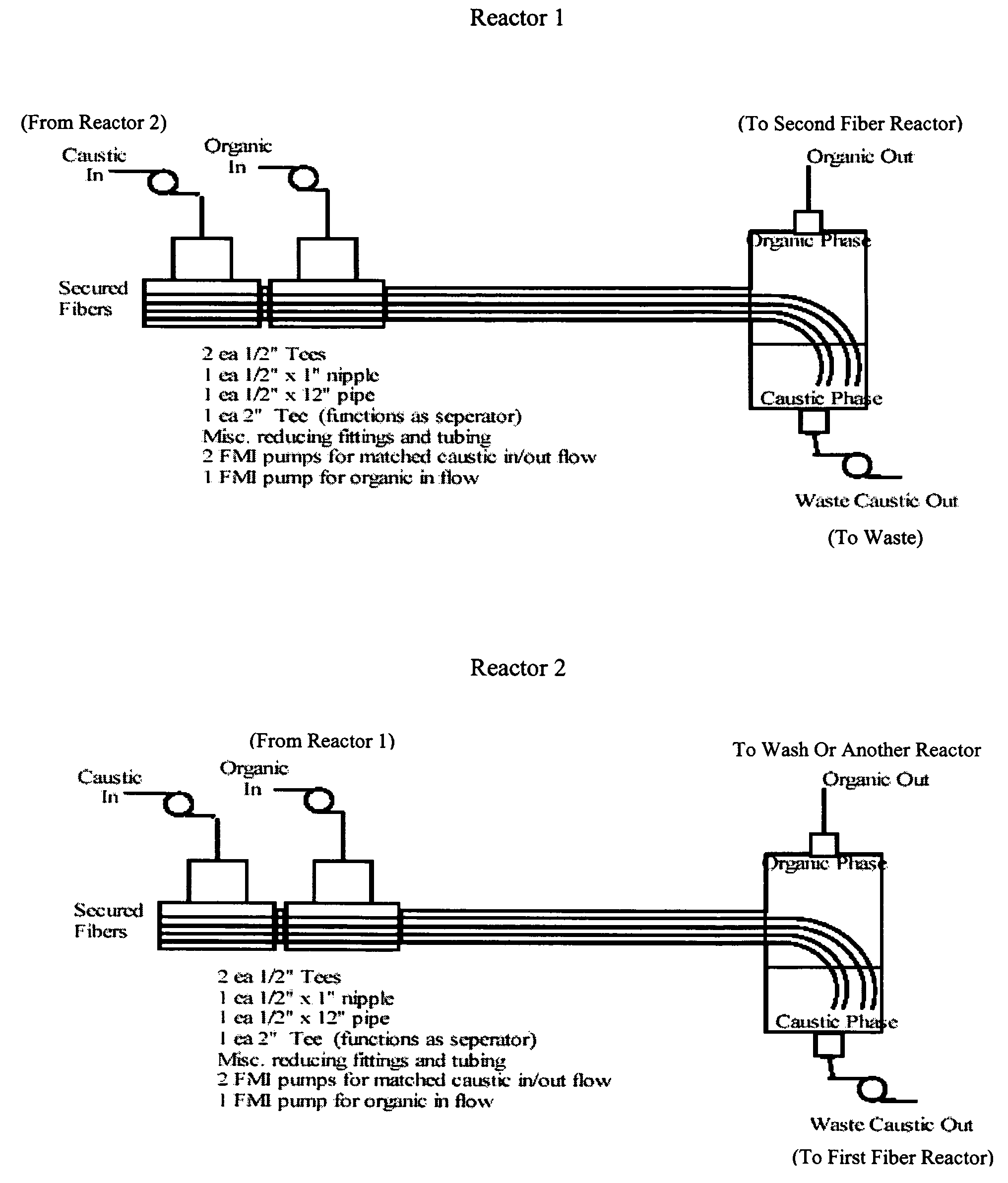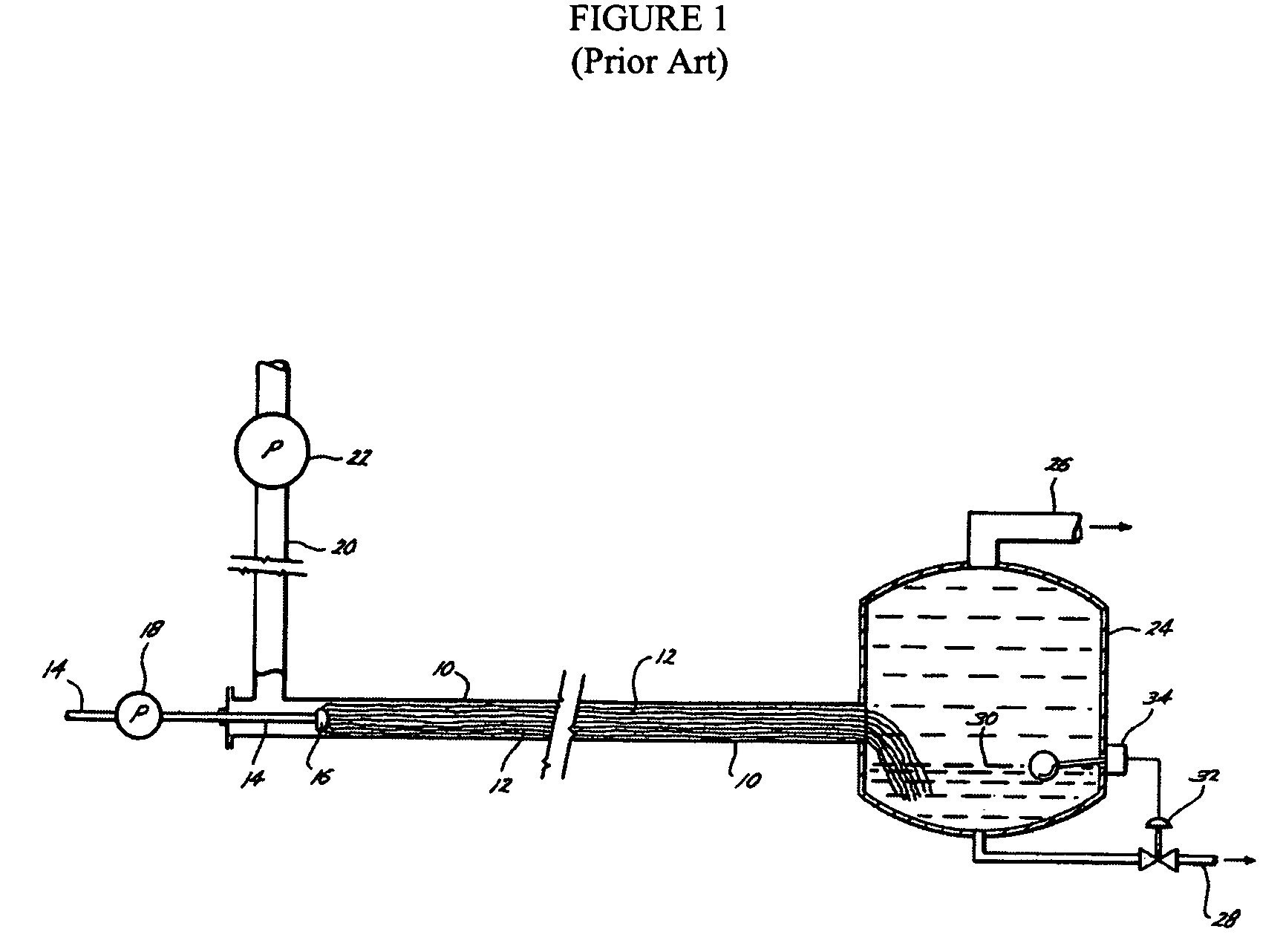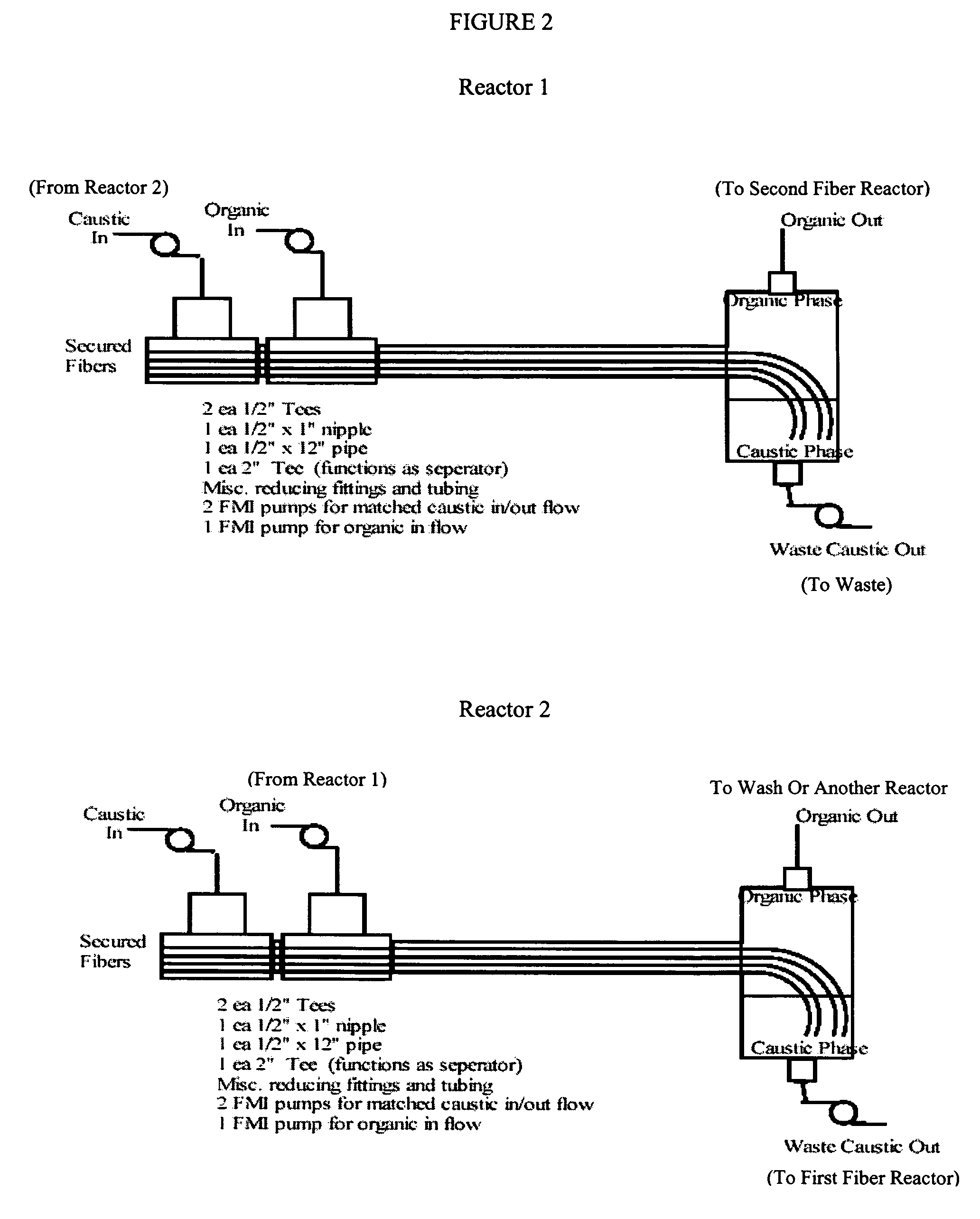Fiber film reactors to effect separation and reaction between two immiscible reaction components
a fiber film reactor and reaction component technology, applied in the field of fiber reactors/contactors, can solve the problems of ptc project, most difficult to meet, and inability to use ptc technology,
- Summary
- Abstract
- Description
- Claims
- Application Information
AI Technical Summary
Benefits of technology
Problems solved by technology
Method used
Image
Examples
example 1
[0036]This example illustrates the use of a conduit reactor comprising a 12″×¼″ stainless steel tube containing approximately 100,000 glass fibers.
[0037]Tests were run with approximately 100,000 glass fibers 17 inches in length in a ¼-inch internal diameter (I.D.) stainless steel tube. The liquid volume of this reactor was approximately 2.9 mL. Two liquids were pumped through this tube, with the constrained phase on the glass fibers being a 23% by weight sodium hydroxide aqueous solution. The continuous phase was a mixture of epichlorohydrin and resin chlorohydrin (made by reacting epichlorohydrin and bisphenol A (BPA) in a 10:1 molar ratio at 70° C. for 24 hours), and included 0.2% tetrabutyl ammonium hydroxide used as a coupling initiator and phase transfer catalyst. The caustic flow rate was 0.5 mL / min. Table 1 shows flow rate, stoichiometry, conversion, and contact time data obtained using the aforementioned reactor for phase transfer catalyzed ring closure of resin chlorohydrin...
example 2
[0039]This example illustrates the use of a conduit reactor comprising a 36″×½″ stainless steel tube with approximately 570,000 glass fibers.
[0040]Tests were run with approximately 570,000 glass fibers 40 inches in length in a ½-inch I.D. The liquid volume of this reactor was approximately 35 mL. Two liquids were pumped through this tube with the constrained phase on the glass fibers being a 23% by weight sodium hydroxide aqueous solution. The continuous phase was a mixture of epichlorohydrin and resin chlorohydrin (made by reacting epichlorohydrin and bisphenol A in a 10:1 molar ratio at 70° C. for 24 hours), with 0.1% tetrabutyl ammonium hydroxide coupling and phase transfer catalyst. The caustic solution was introduced onto the upstream end of the glass fibers at about 12 to about 60 mL per hour. The organic phase was introduced into the conduit and flowed past the fibers at rates varying between about 30 and about 3540 mL per hour. After passing through the fiber reactor, the se...
example 3
[0042]This example illustrates the use of a conduit reactor comprising a 12″×½″ stainless steel tube with approximately 570,000 glass fibers.
[0043]Tests were run with approximately 570,000 glass fibers 16 inches in length in a 12″ outside diameter (O.D.)×½-inch I.D. stainless steel tube. The liquid volume of this reactor was approximately 18 mL. Two liquids were pumped through this tube with the constrained phase on the glass fibers being a 23% by weight sodium hydroxide aqueous solution containing 2% tetrabutyl ammonium hydroxide phase transfer catalyst. The continuous phase was a mixture of benzyl alcohol and benzyl bromide (1:1 molar ratio) in equal weight of toluene. The caustic solution was introduced onto the upstream end of the glass fibers at 60 mL / hr. The organic phase was introduced into the conduit and flowed past the fibers at rate of 270 mL / hr. The reactor was maintained at 75° C. After passing through the fiber reactor, the organic phase separated cleanly from the aque...
PUM
| Property | Measurement | Unit |
|---|---|---|
| length | aaaaa | aaaaa |
| volume | aaaaa | aaaaa |
| flow rate | aaaaa | aaaaa |
Abstract
Description
Claims
Application Information
 Login to View More
Login to View More - R&D
- Intellectual Property
- Life Sciences
- Materials
- Tech Scout
- Unparalleled Data Quality
- Higher Quality Content
- 60% Fewer Hallucinations
Browse by: Latest US Patents, China's latest patents, Technical Efficacy Thesaurus, Application Domain, Technology Topic, Popular Technical Reports.
© 2025 PatSnap. All rights reserved.Legal|Privacy policy|Modern Slavery Act Transparency Statement|Sitemap|About US| Contact US: help@patsnap.com



